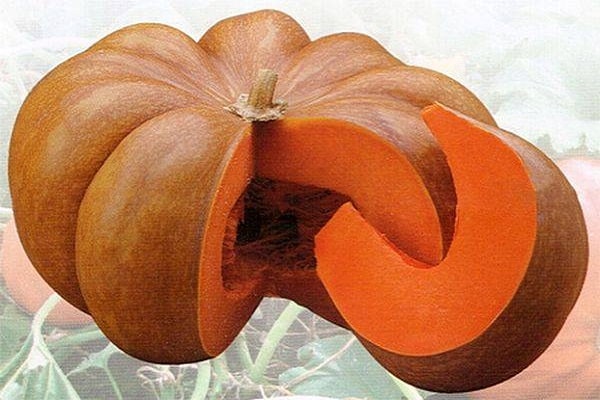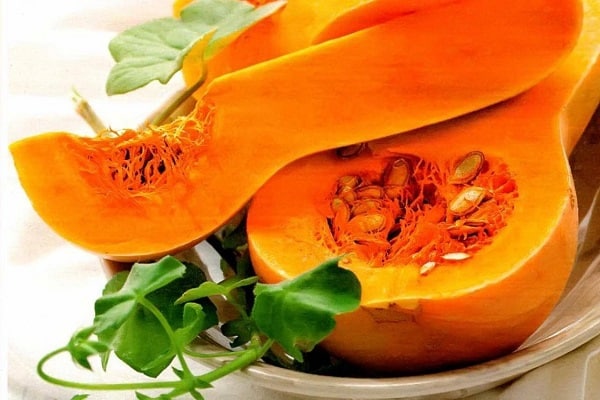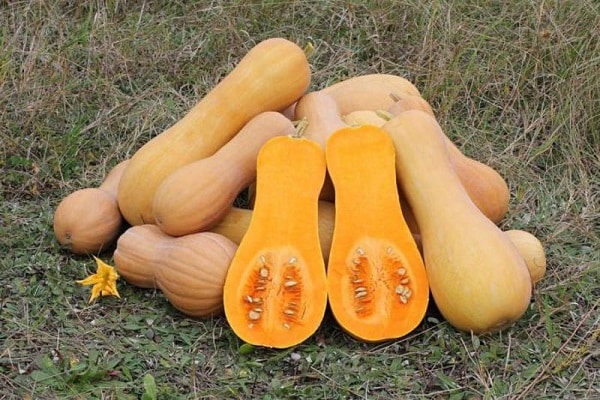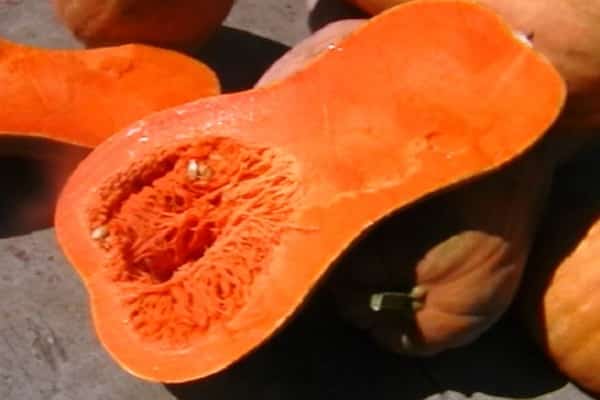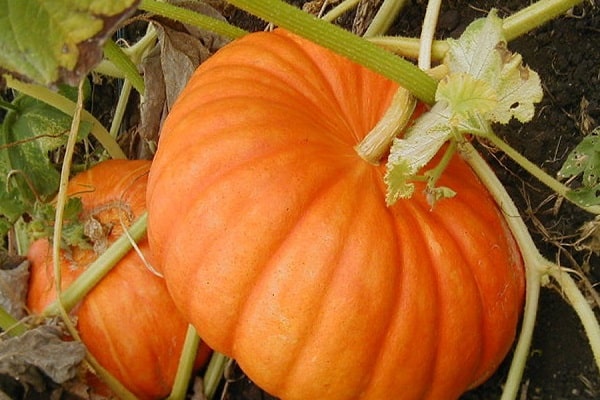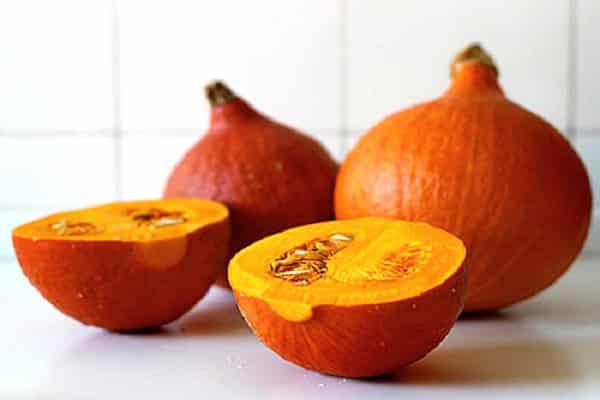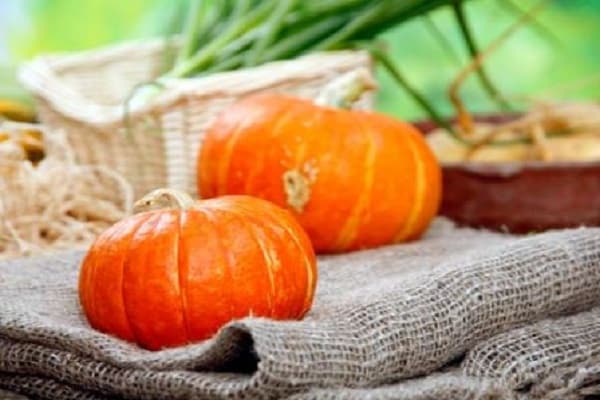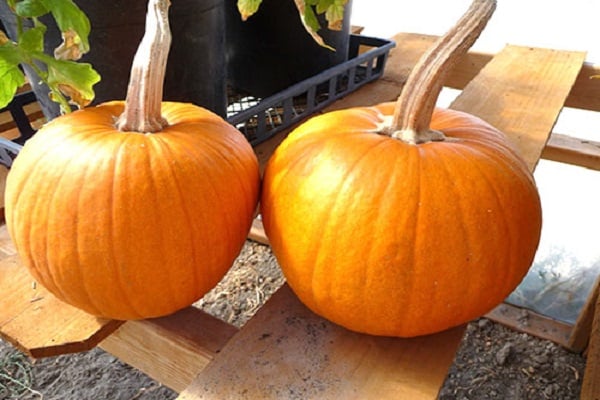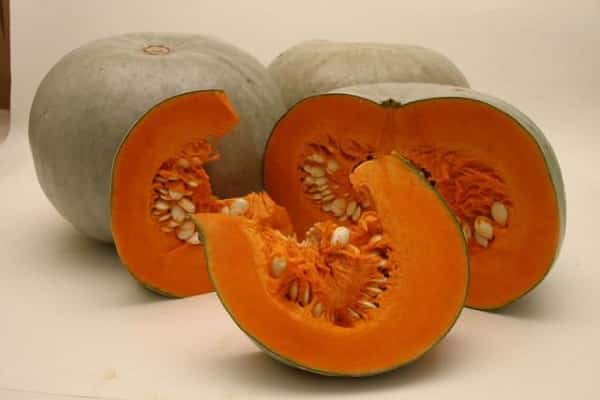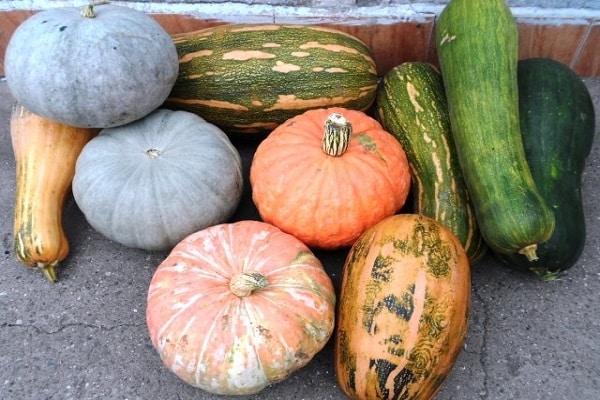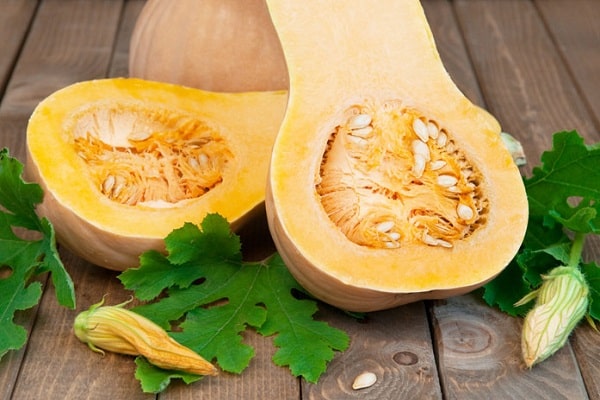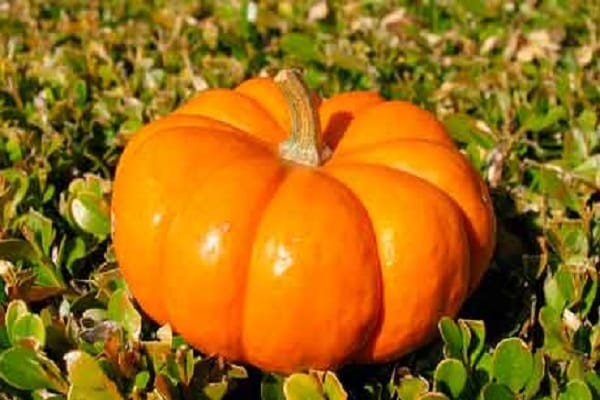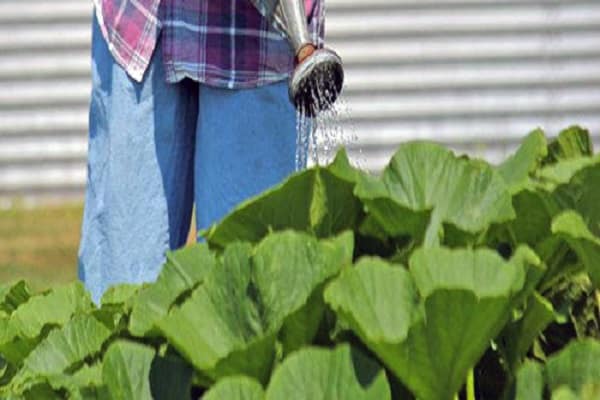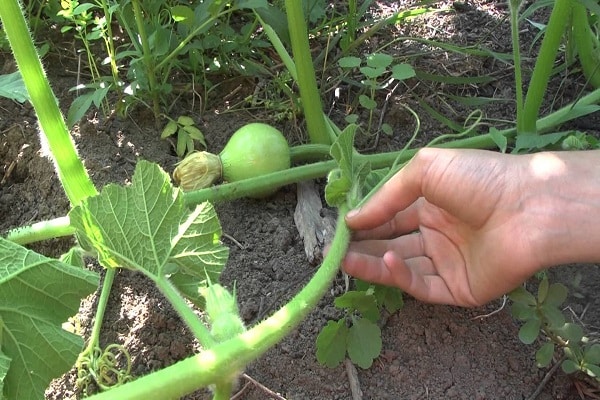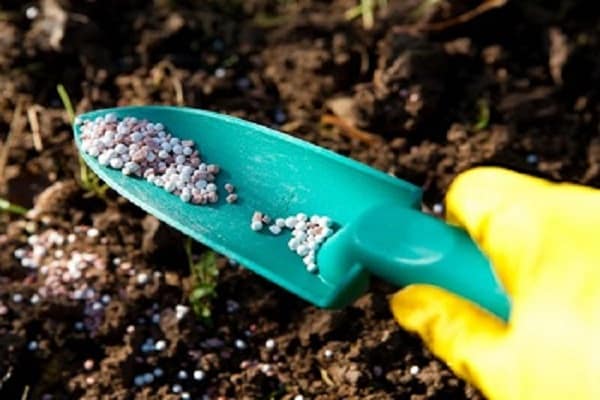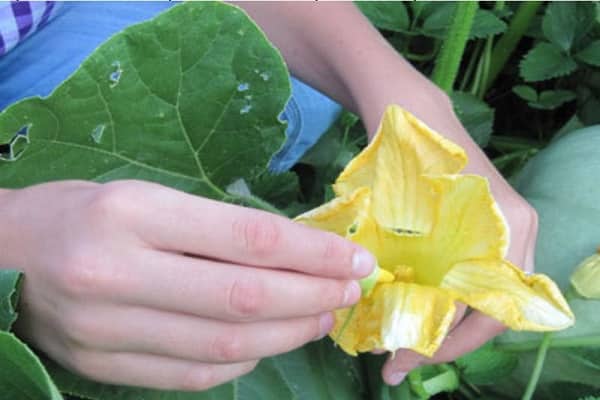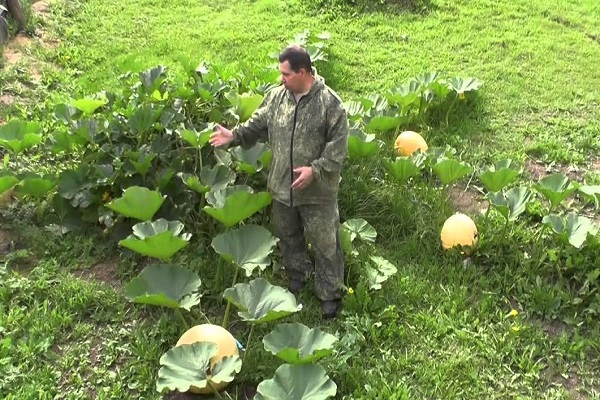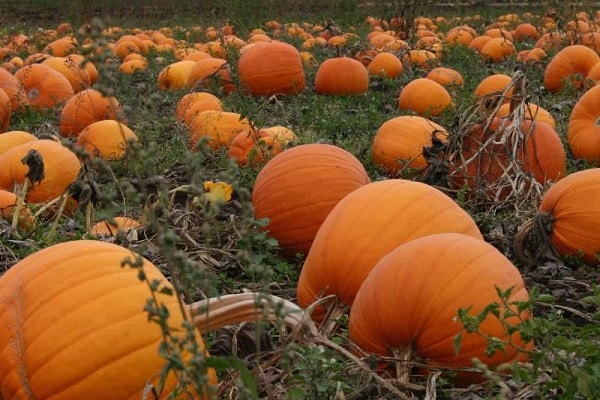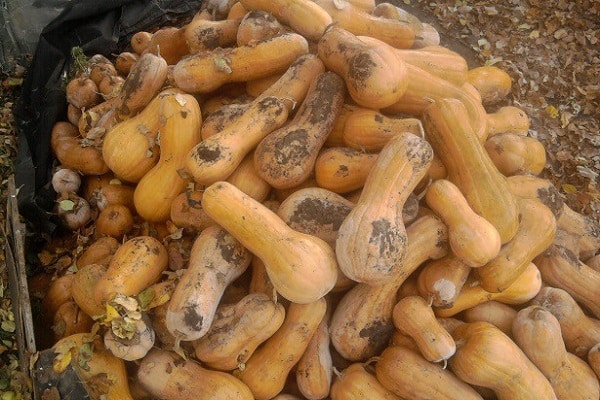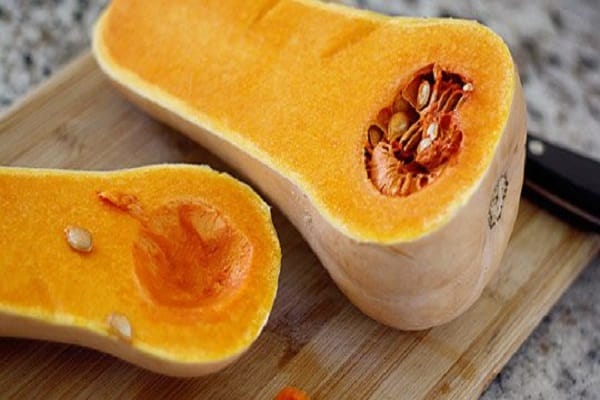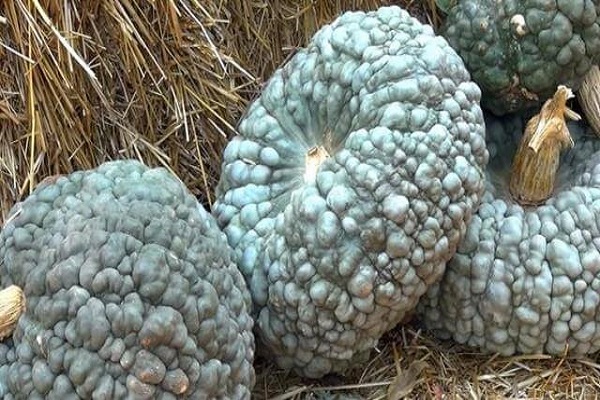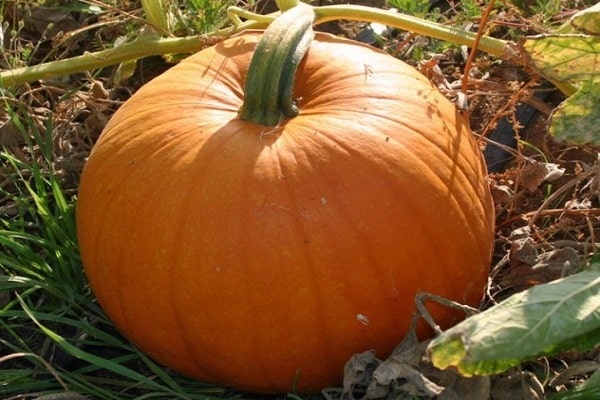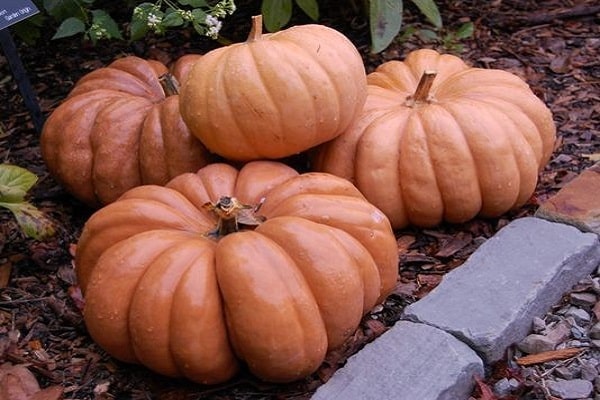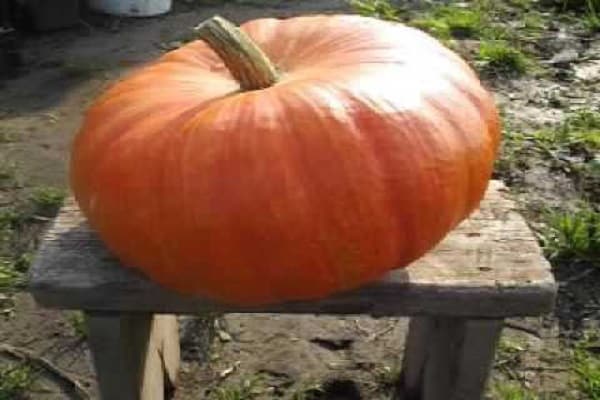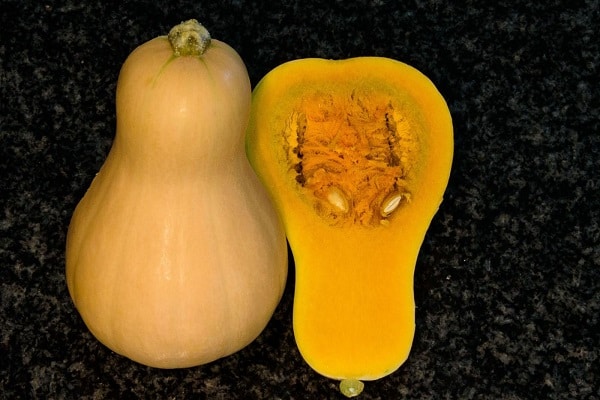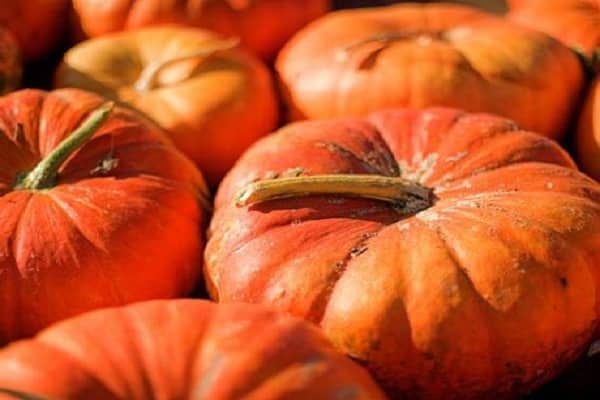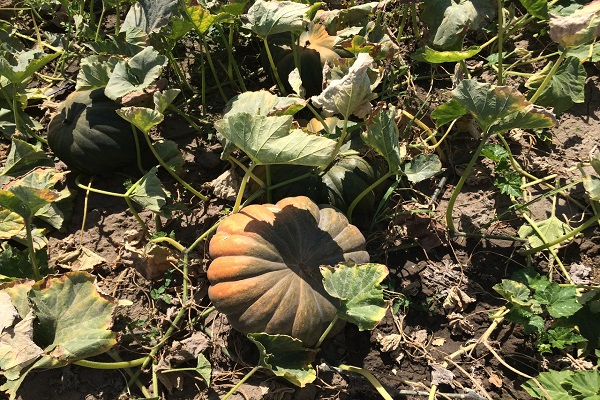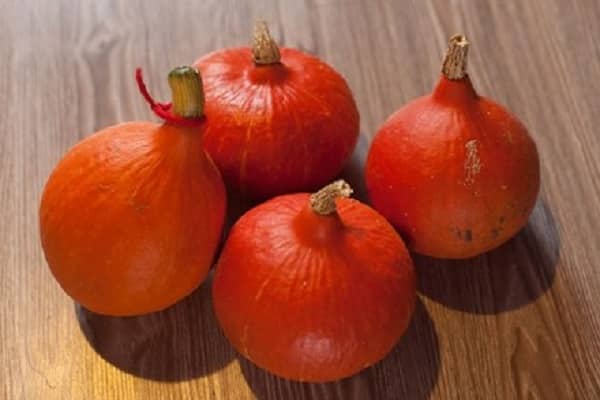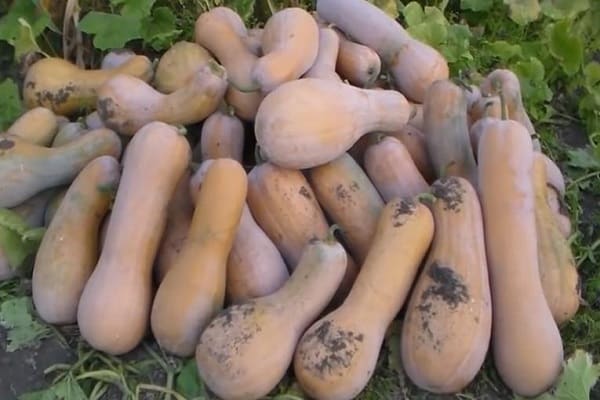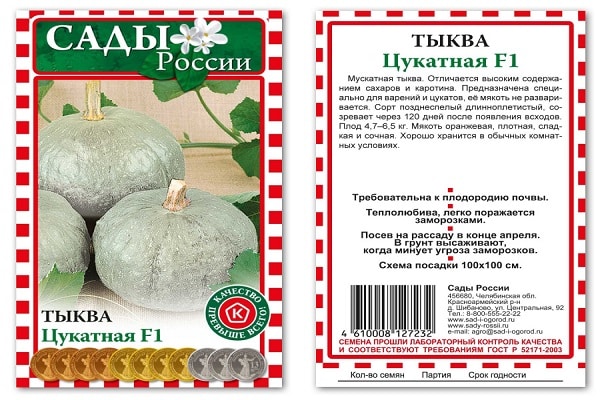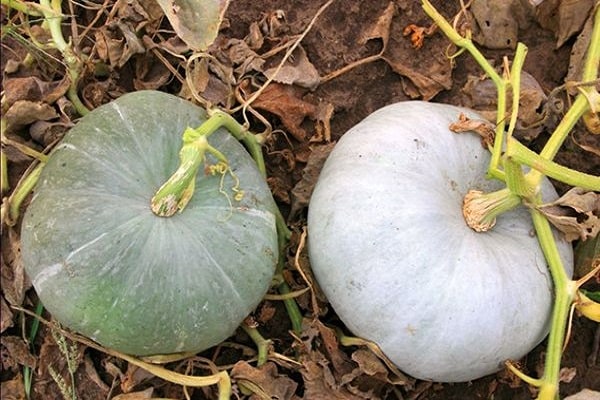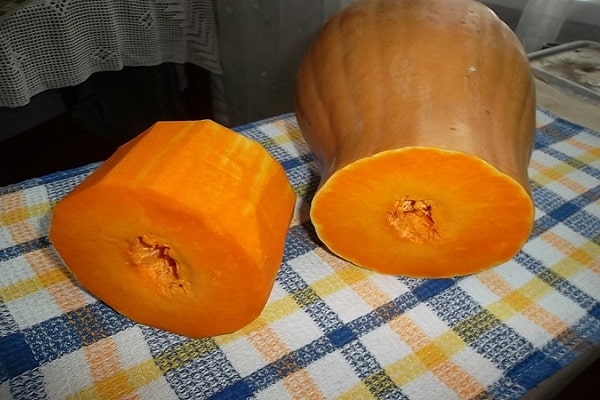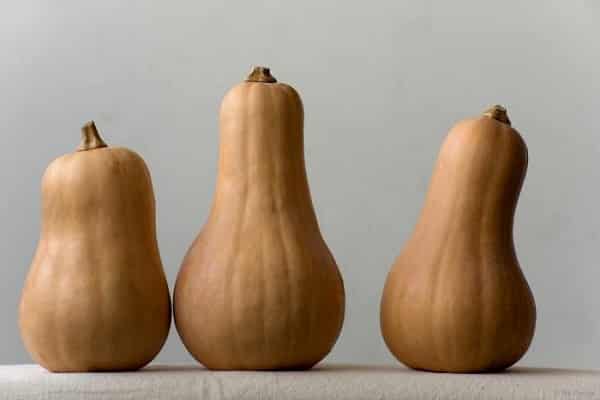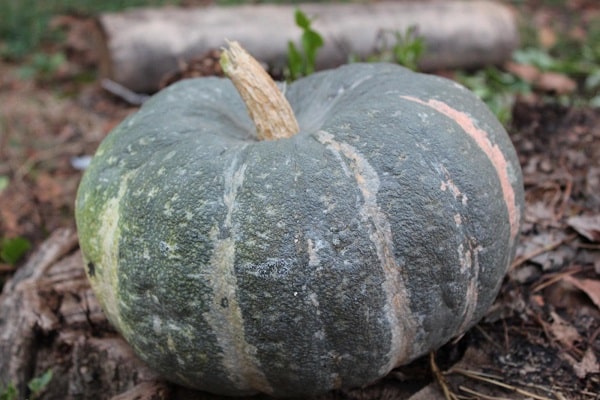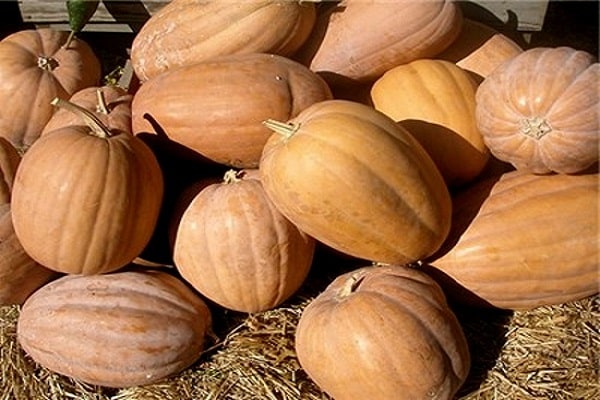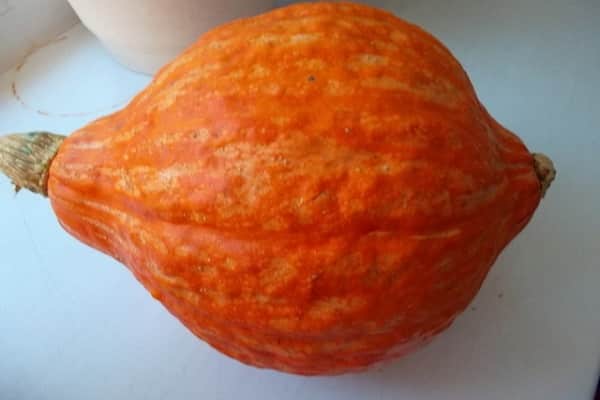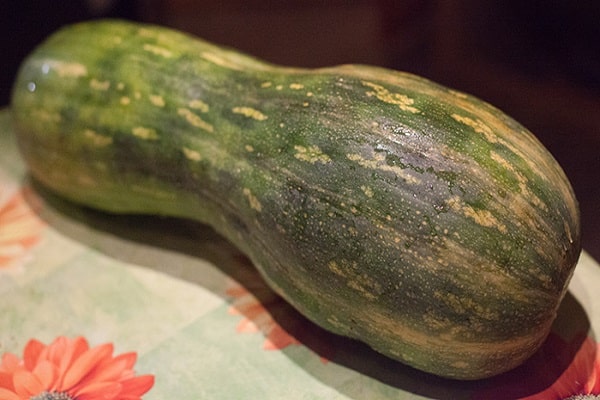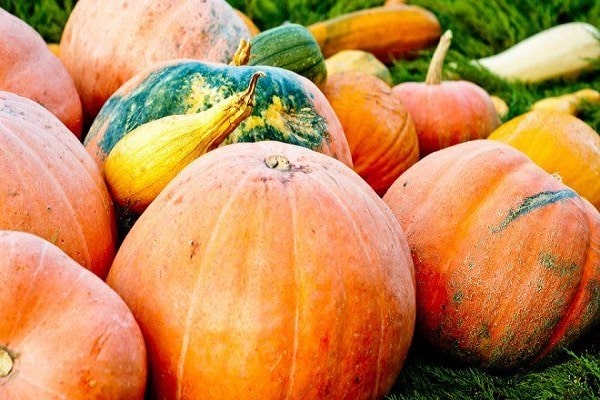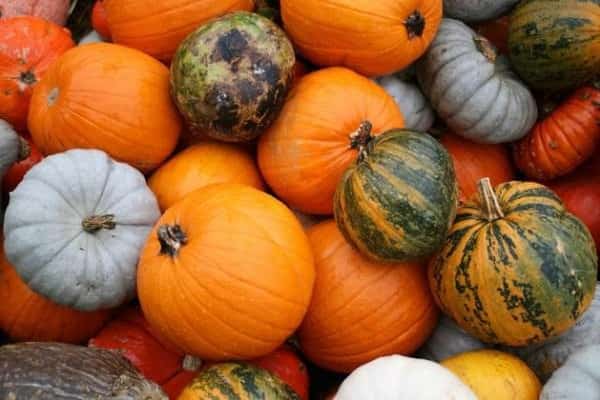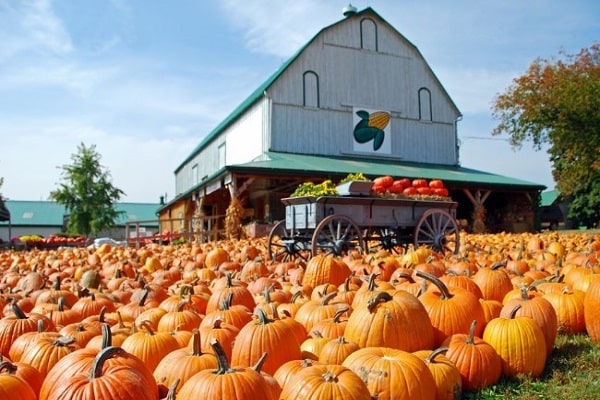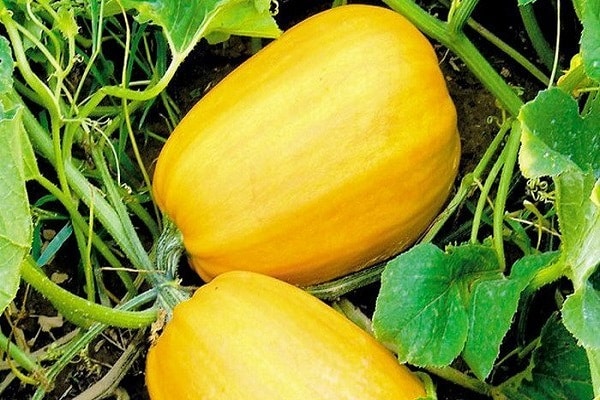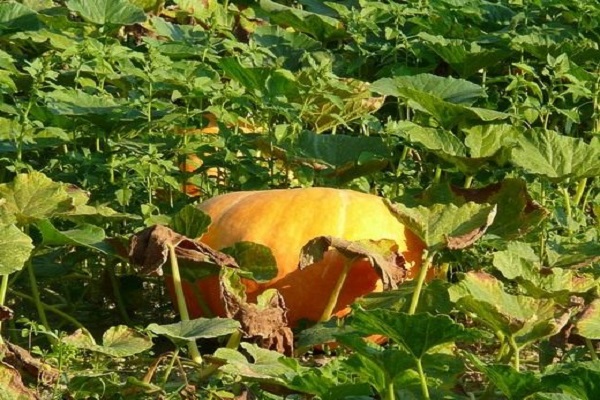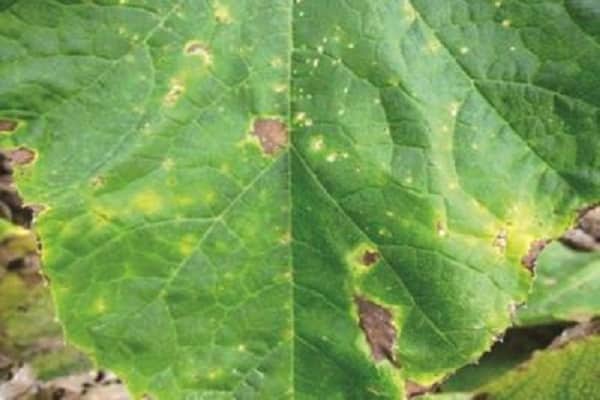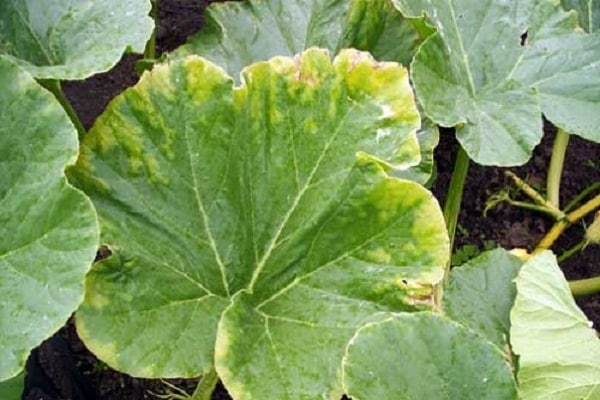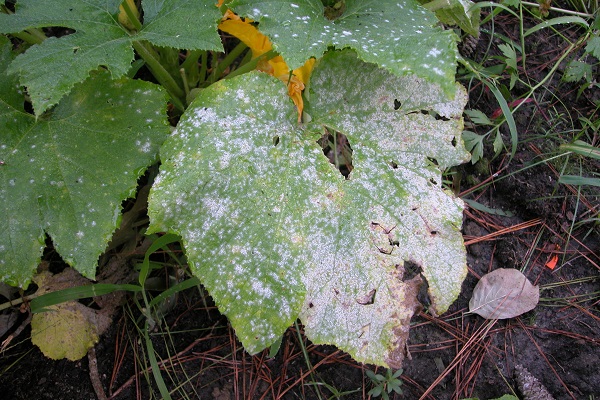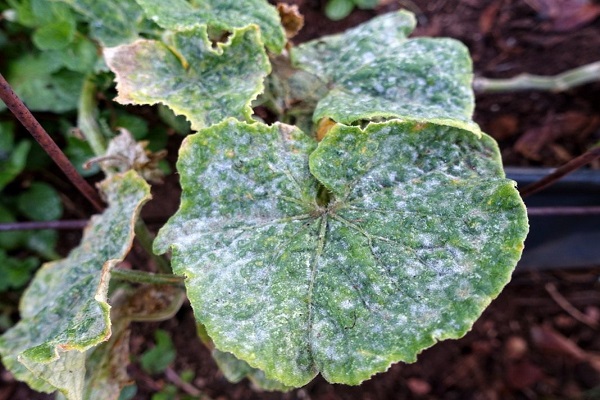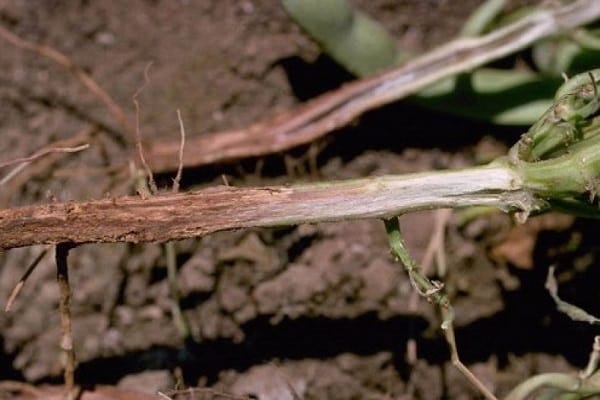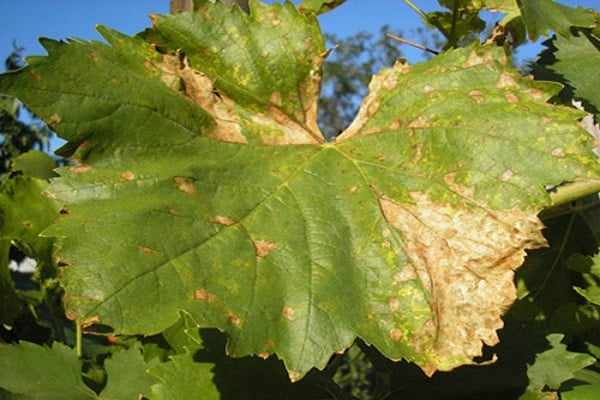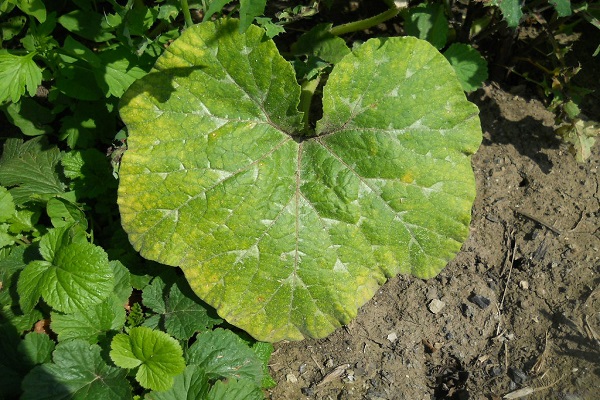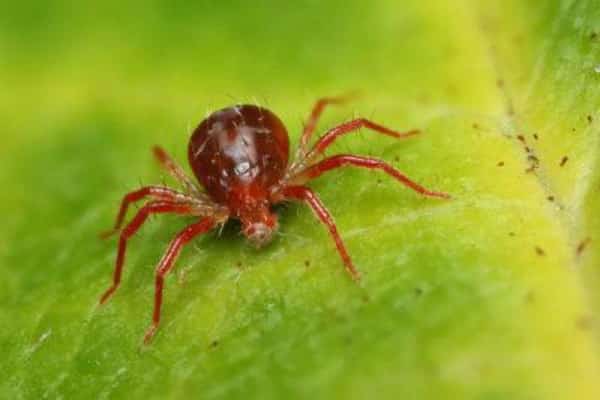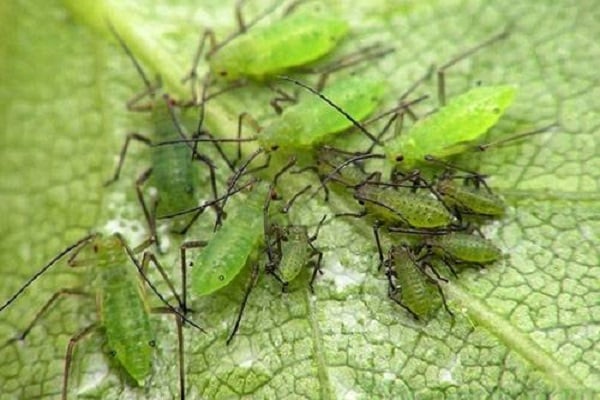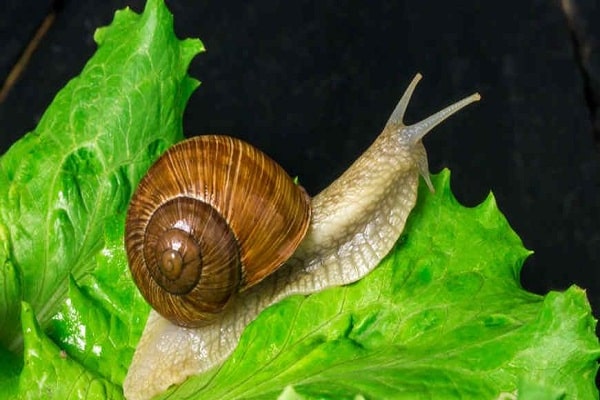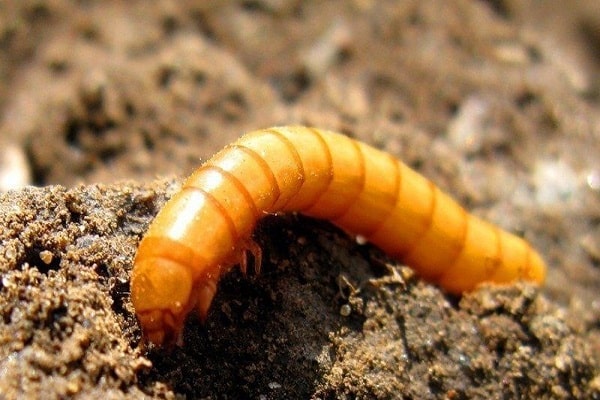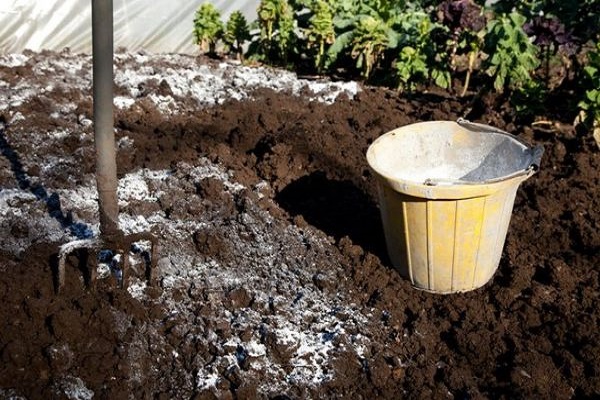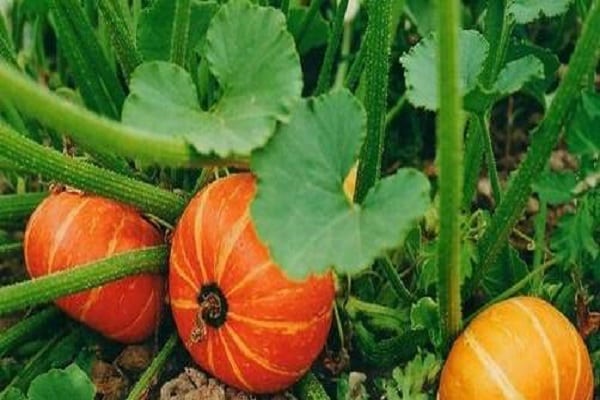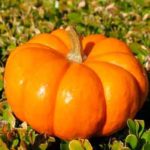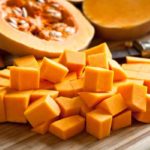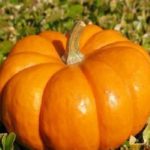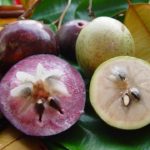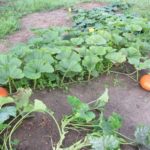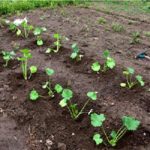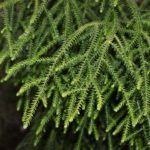Among the varieties of pumpkin, butternut squash is popular. Belongs to the Pumpkin family and is considered an annual plant. The fruits have different shapes: round, slightly flattened, oval or pear-shaped. It is distinguished by high yield and excellent taste, juicy pulp and bright orange skin.
- Beneficial features
- Suitable region and climate
- How to grow?
- Selecting a site and planting time
- Preparing the bed
- Preparing seeds for sowing
- How to plant pumpkin seeds?
- Propagation of butternut squash
- Negative factors
- Care
- Watering
- Formation of lashes
- Feeding
- Pollination
- Weeding
- Varieties of butternut squash
- Arabatskaya
- Pearl
- Marina from Chioggia
- Vitamin
- Provençal
- Honey Princess
- Butternut nut
- Muscat
- Muscat de Provence
- Hokkaido
- Spanish guitar
- Tsukatnaya
- Bylinka
- Vita
- Prikubanskaya
- Marble
- Palav Kadu
- golden pear
- Augustine
- Pumpkin yield, harvesting and storage
- Diseases and pests of butternut squash
- Bacteriosis
- Powdery mildew
- Root rot
- Anthracnose
- Yellow mosaic
- Pests of butternut squash
- Spider mite
- melon aphid
- Slugs
- Wireworm
- Prevention of pests and diseases
The name of the tasty vegetable was given because of the aroma emanating from it. Butternut squash was first developed in Central America. On average, its weight is 3 kg, and the special difference between the fruits is that they taste sweet.
Beneficial features
Popular in Colombia, Peru, Asia, and Mexico. This type of pumpkin was brought to Europe only in the 18th century. The vegetable is a healthy dietary food; it consists almost of water, which is 90%, although the pumpkin pulp is dense.
This pumpkin should be on every table. You can prepare a variety of dishes from it - porridge, soups, confectionery. It is stewed, baked, boiled, pickled and dried. In addition, butternut squash is the only type of pumpkin that, thanks to its thin skin, is pleasant to eat fresh and add to salads.
The vegetable is healthy. The range of its valuable properties is amazing, it:
- Improves vision due to the presence of carotene, lutein and zeaxanthin.
- It has a diuretic effect, cleansing the kidneys and bladder of toxins and salts.
- Strengthens the cardiovascular system, cleansing blood vessels, lowering blood pressure, and also helps remove “bad” cholesterol.
- It prevents dangerous diseases such as angina pectoris, myocardial infarction, atherosclerosis, and stroke.
- Contains fiber, improving the functioning of the gastrointestinal tract.
- It has a low calorie content: 45 kcal per 100 grams of product, therefore it is considered a dietary product. Thanks to her, you can get rid of extra pounds.
- Helps improve the functioning of the immune system due to the content of vitamin C and folic acid.
- Slows down the aging of the body, as it contains potassium and vitamin K. They protect cells from free radicals, as well as waste and toxins accumulated in the body.
- Improves the condition of teeth and joints. The calcium it contains strengthens tooth enamel and bones.
- It can improve the patient’s condition during the flu, since the vitamin C contained helps to quickly get rid of viruses and restore a sore throat.
- This product is useful for pregnant women, as it practically does not cause allergies, supplies the body with only everything useful, which will contribute to the full development of the fetus.
In terms of content, nutmeg pumpkin is considered a storehouse of vitamins and microelements. It contains vitamins A, B, C, PP, E, as well as microelements - magnesium, potassium, calcium, iron and others.
Suitable region and climate
Butternut squash is a heat-loving crop and grows outdoors only in the southern regions. In northern conditions, it is grown in greenhouses.
How to grow?
The vegetable takes a long time to ripen: the growing season ranges from 115–140 days. But there are still early ripening varieties that are best grown in the middle zone.
Most often you have to clean at the end of August or mid-September before frost sets in. It’s okay that the fruits are not fully ripened: they will ripen during storage. This will take 45–60 days.
Selecting a site and planting time
Before choosing a site for Butternut Squash, you need to remember that it is considered a heat-loving and southern crop. The place should be slightly elevated (so that the water does not stagnate) and be illuminated by the sun all day. If the slightest shadow falls on the plants, you won’t get any harvest.
It is necessary to remember: pumpkin prefers spacious beds. After all, its lashes can stretch up to 3 meters to the sides. Pumpkin remains immune to many diseases and easily tolerates temperature changes.
In order for the nutmeg pumpkin in the middle zone to fully ripen, it is necessary to plant it in seedlings. Seeds are sown at the end of April in separate containers. They are planted in a permanent place of growth in early June, when there is no danger of frost.
The following are considered dangerous factors:
- cold snap that lasted a long time;
- prolonged rains;
- spring frosts.
Preparing the bed
To plant seedlings, you need to prepare a bed. It is desirable that the soil is loose and well saturated with organic fertilizers. Rotted manure and compost must be poured into each hole.
It’s even better if there is a pile of manure nearby the pumpkin patch.
Preparing seeds for sowing
Before carrying out the process of sowing seeds, it is recommended to prepare them. To do this, they are first soaked in a solution of potassium permanganate for 30 minutes, then immediately transferred to the dissolved growth simulator Epin, and kept in it for another 30 minutes. Then they are wrapped in damp gauze or cotton fabric and placed in a warm place for germination.
How to plant pumpkin seeds?
To get strong seedlings, you must do the following:
- Keep the seedlings at home for about a month.
- Then prepare the containers in advance. It is better that they are separate for each plant. They are filled with special soil for growing seedlings.
- Plant 2 seeds in each container.
- The containers are covered with film to maintain soil moisture and placed in a dark, but most importantly, warm place.
- As soon as the shoots appear, it is recommended to remove the film and move the plants to a well-lit windowsill.
- Then a strong plant is selected from the seedlings, and the weak one is removed. Leaving only one sprout.
- After half a month has passed, it is necessary to begin hardening the plants. It is recommended to take them out onto the balcony, gradually lengthening the time.
- At the end of May or June, it is recommended to plant pumpkin sprouts in open ground.
When planting seedlings in open ground, it is necessary to monitor the temperature in the air and soil: it should not be lower than 15 °C. Pumpkin is afraid of the slightest frost. It's better to wait until the weather settles.
Propagation of butternut squash
There are two main methods of propagation - seeds and seedlings. The seeds are taken from the best, well-ripened pumpkin; there are a lot of them in the middle of the fruit. The seeds are removed, dried and stored until next spring.
Negative factors
Negative factors that worsen and complicate obtaining a good harvest are:
- development of diseases;
- insect attack;
- natural disasters (frosts, frequent rains, drought).
The first two must be combated using chemicals and folk methods.
Care
After planting plants with seeds or seedlings, they need to be cared for. This means watering in a timely manner, loosening the soil, fertilizing, removing weeds, forming canes, and fighting pests and diseases.
Watering
Watering is an important condition in obtaining a butternut squash harvest. It is required to water in the morning or evening, only with warm, soft water. It is advisable to pour water at the root so that water does not fall on the leaves, especially when the bright sun is shining.
For pumpkin, it's important to have everything in moderation. It does not tolerate drought and excessive soil moisture. If the temperature outside is high and the plant is in the sun, it is advisable to shade it a little with straw or hay.
Formation of lashes
To obtain large fruits, it becomes necessary to adjust the formation of vines. The central lash is left, and the side ones are removed, except for two branches: they should not exceed a length of 70 cm.
Feeding
Fertilizing is important for fetal growth. Organic fertilizers are welcome. This could be mullein, compost, rotted manure.
Wood ash is required as a mineral supplement. During the entire growing season (summer season), it is necessary to apply about 4 fertilizing at least 1-2 times a month. It is advisable to purchase superphosphate, potassium sulfate.
Pollination
It is known that nutmeg pumpkin does not pollinate on its own, so it will need the help of insects, but it is safer if the owner does this himself. To do this, you need to find a male flower (blooms first) during the flowering period, tear off the petals, leaving only the pistil. They touch the stamens on the female flower.
Weeding
After planting a vegetable, you need to make sure that weeds do not grow near it, which will begin to absorb the beneficial substances intended for the pumpkin. Remove weeds in a timely manner by slightly loosening the nearby soil. To limit their growth, you can mulch the pumpkin with straw or cover it with agrospan.
Varieties of butternut squash
This is a healthy crop, so breeders have done a lot of work and developed many different varieties.
They differ from each other:
- appearance;
- sizes;
- shape;
- purpose;
- content of vitamins and microelements.
Arabatskaya
This variety of butternut squash has a medium-late ripening period. Grows in open ground. Grows up to 8 kg. The fruit is covered with a thin light orange skin. The pulp is dense, juicy, aromatic and orange in color. The fruits are perfectly stored.
The variety is good for those who like to enjoy this vegetable in cold winter. The shelf life reaches 4 months.
Pearl
According to the description, Zhemchuzhina pumpkins belong to the mid-late varieties. They have orange skin and a round-cylindrical shape. The pulp is orange, juicy, sweet.
The fruits are perfectly stored in the refrigerator or cellar. The growing season is 110 days.
The bush is compact, the fruits weigh about 8 kg. Planting and growing Pearl, like Muscat, is done in open ground using seeds at a distance of 60 cm. It develops well when organic fertilizers are applied. It has cold-resistant qualities when grown.
Marina from Chioggia
The vegetable comes from Italy. It resembles a sea monster in appearance, as the crust is slightly flattened, but the fruit has a round shape. Legend has it that this type of pumpkin was brought to the people of Chioggia by the sea.
Medium late variety. The vegetative period is about 130 days. Pumpkins grow large and can weigh about 12 kg. Pumpkin has a high sugar content in its composition, so it is considered a universal vegetable for preparing various dishes. They make preserves and jams from it, even add it to cakes and puddings, and prepare candied fruits.
Vitamin
Vitamin pumpkin is considered a late-ripening variety. The fruits are ready for consumption after 140 days. They have an elongated oval shape, with thin skin, brown in color interspersed with a yellow-pink hue. The pulp has a bright orange color, juicy, crunchy, and sweetish in taste.
The weight of the fetus reaches 5 kg. You can plant seeds, but it is better to choose seedling planting method so that the fruits ripen earlier. It is better to plant by placing the holes in rows.
Provençal
It has a round, slightly flattened shape, the crust is not thick, slightly ribbed. The peel is matte orange. It is considered mid-season in terms of maturity. The growing season is 120 days. The fruit grows weighing up to 8 kg.
The pulp is bright orange, with excellent taste. It has an interesting feature: the longer you store pumpkin, the better it tastes. It is good for desserts, juice and candied fruits.
Honey Princess
This variety is considered mid-season. The fruits ripen on day 115. The plant is distinguished by the fact that it grows very powerful, so it is planted at a great distance from each other. The holes must be dug 100 cm apart.
The fruits grow of medium size up to 4 kg. The pulp is bright orange and sweet in taste. It’s not for nothing that the fruit has such a name. The peculiarity is that pumpkin remains immune to many diseases and easily tolerates temperature changes.
Butternut nut
This is an early ripening variety with a vegetative period of 90 days. It was developed in Italy and has an oblong shape. The peculiarity of the fruit is that the seeds begin to form at the bottom of the pumpkin. Due to this, there is more pulp.
It has a pleasant pumpkin aroma and a sweet taste. Very often this variety is used as a dietary food.
Muscat
Butternut squash, as described, is one of the varieties of the late melon variety with beautiful orange fruits. The fruit ripens in 140–150 days and has an oblong shape. Cultivation and care are carried out after planting in open ground.
Vitamin juices are obtained from it, since the pulp is orange, with a pleasant aroma, juicy and crispy. Suitable for dietary nutrition.
Muscat de Provence
This variety is considered medium-late, as it ripens in 115–120 days. Butternut squash has a thick crust. It helps to extend the storage of fruits, while all its valuable qualities are preserved.
The fruits grow up to 8–10 kg. The pulp is rich orange in color, with a very pleasant taste of honey. This variety is resistant to temperature changes and diseases.
Hokkaido
The Hokkaido variety is becoming increasingly popular among vegetable lovers. It is considered an early ripening plant. It can be different in shape: pear-shaped, round, slightly flattened. The fruits are not particularly large. They weigh from 700 grams to 2.5 kg.
The flesh ranges from yellow to almost red. The taste reminds sweet potato or chestnuts. The rind of the fruit can be green, white or gray. It has a high content of nutrients. To obtain a high yield, timely watering and fertilizing are required.
Spanish guitar
It is not for nothing that this variety bears such a name, because the fruit has an unusual shape, reminiscent of a guitar. Since it grows in the shape of a pear, up to a meter long, and weighing from 5–10 kg. The skin is yellowish-green in color and the flesh is orange. Its taste is reminiscent of carrots, a little apricots. Externally, this guitar pumpkin looks more like a zucchini.
Tsukatnaya
This vegetable produces wide, slightly flattened fruits.In terms of ripening, it belongs to the mid-late varieties. The vegetative period lasts up to 140 days. The fruit weighs up to 5 kg.
A special feature is the change in color of the crust as it ripens. At first it is green in color, when ripe it is almost brown. You can easily tell by the color that the pumpkin is ready to eat. The pumpkin pulp is orange, juicy and sweet. It is suitable for making confectionery products.
Bylinka
It is a flat variety and the skin is grey, but becomes lighter as it ripens. The pulp is orange, sweetish taste. Suitable for dietary purposes.
Vita
This plant is classified as mid-season in terms of ripening. The vegetative period is 115 days. It has a gray skin. The fruit grows weighing up to 4.5 kg.
The pulp is juicy, with a pleasant nutmeg aroma, so any prepared dish has a pleasant taste. It keeps very well.
Prikubanskaya
The Prikubanskaya pumpkin grows pear-shaped and is considered medium-late in terms of ripening, from 115–140 days. The fruit is small. Its weight is 2.5 kg, can be up to 4.5 kg. Has thin skin.
Marble
Pumpkin is considered mid-season in terms of ripening, is about 130 days. The fruits are round in shape, but slightly flattened. It has a marble color. This is a combination of green and gray.
The pulp is orange, sweet and aromatic. This pumpkin has the advantage that it can be stored for a long time, the fruit does not crack or rot.
Palav Kadu
This is a late-ripening variety, the growing season is 150 days. Therefore, it is better to grow using seedlings. The pumpkin grows round, the surface is not smooth, its ribbing is noticeable. The skin is orange, the flesh is juicy and sweet. The average weight of the fetus is 10 kg.
golden pear
Pumpkin is distinguished by bright orange fruits and is shaped like a droplet. It ripens quickly in 95 days. The pulp is orange in color, very juicy with a chestnut flavor.
The fruits are small and portioned. Weight about 2 kg. Various dishes are prepared from Golden Pear pumpkin: casseroles, soups, porridges. Follow the planting pattern, digging holes about a meter apart.
Augustine
This variety is characterized by high productivity. Augustine pumpkin fruits ripen in 105 days. They are cylindrical in shape, green in color, with small light spots. This pumpkin is used raw for making salads, and also used to prepare aromatic porridges, pancakes and purees.
Pumpkin yield, harvesting and storage
It is necessary to remove pumpkins from the beds in a timely manner. Much depends on the variety and timing of ripening. Early varieties are harvested in mid-August, mid-late ones around the end of the month, and late ones in September.
To find out about the ripening of the pumpkin, it is recommended to press the crust with your finger; if there is no hole, the pumpkin is hard, which means it is ready for harvesting. There are varieties of pumpkin that change the color of the fruit as they ripen. Please refer to the instructions on the seed package for details.
Harvest in dry and sunny weather. It is advisable to make it before frost, otherwise its shelf life will be shortened.
We must remember that the pumpkin will finally ripen during storage. To do this, you need to wait another 1.5–2 months.
It is cut off with a sharp knife; if it is heavily soiled, it is recommended to wipe it with a damp cloth.
Storing the pumpkin harvest depends on the variety. There are pumpkins that need to be stored in cold rooms, but generally they retain all their qualities well at room temperature.
If you intend to store the pumpkin for a long time, you must carefully examine the fruit; it should not have any damage to the crust. Although the pumpkin has amazing abilities, the wounds on it heal themselves after a while. During storage, it ripens, at which time the crust becomes much thicker, the color changes, and the flesh becomes bright orange. Pumpkin can be stored for 3–12 months.
Diseases and pests of butternut squash
Pumpkin is rarely susceptible to various diseases and has strong immunity. But still, individual plants can get sick or be susceptible to pumpkin pests, so you need to know what diseases there may be and how to fight them. After all, any disease can affect the quality of the crop.
Common butternut squash diseases include:
- bacteriosis;
- powdery mildew;
- white root rot;
- anthracnose;
- yellow mosaic.
Bacteriosis
The disease appears as dark green spots in the veins of leaves. An oily consistency begins to accumulate on the back of the sheet. Then the leaves where there is damage turn brown and then dry out. After some time, these spots fall out and the leaves become full of holes.
In addition, the fruits begin to suffer from this infection: they become irregular in shape and grow deformed.
Often this disease develops in damp weather, when sharp temperature changes are noticed between day and night. It is in such weather that this disease develops very quickly, and after a while it can completely destroy the pumpkin if control measures are not taken.
For treatment, Bordeaux mixture is used, as well as copper oxychloride, that is, HOM. Before sowing, pumpkin seeds must be treated with zinc sulfate.If plants become infected, it is better to destroy them and then burn them.
To keep pumpkins healthy, you need to change the planting location. Interestingly, the spread of this infection can be wind, birds, insects and rain.
Powdery mildew
A common disease of melons, including pumpkins, is powdery mildew. It can be recognized by the white spots that initially appear on the leaves in small quantities, then over time they completely cover the entire leaf with a white coating.
The disease is fungal in nature. It gradually begins to suck all the nutrients from the leaves, they dry out completely. This leads to disruption of leaf photosynthesis; over time, the fruit begins to deform and ripens much later. The fungus deposits spores on plants near the pumpkin, including weeds and equipment. They are transported from place to place by the wind.
The environment for the rapid development of the disease is considered very rare watering pumpkin, with frequent application of nitrates to the soil. It is better to choose varieties that have lasting immunity against this disease.
A preventative measure is timely removal of weeds. If infected, you can treat the pumpkin with the following means: a solution of colloidal sulfur, as well as sodium phosphate. You can treat it with infusion of fresh mullein at a ratio of 3:1. Three times more water is taken.
Root rot
A disease that is very difficult to immediately recognize because changes occur in the root system. The roots become brown, soft and cracked. As a result, the lower leaves begin to turn yellow, and then the entire plant dies and the fruit stops developing.
Weak seedlings are more susceptible to this disease, and natural factors also negatively affect if there are sharp temperature changes during the day and night hours. Watering plants with cold water has a bad effect.
Control measures include the introduction of a fungicide - Previkur. Near the neck of the pumpkin, you can remove a small layer of soil and fill in a new one. Treat the leaves by sprinkling them with ash. The neck of the plant at the root can be sprayed with Fundazol.
Anthracnose
This disease is recognized by the pumpkin leaves covered with brownish spots. Then they dry out and crumble, become full of holes and gradually dry out.
The disease spreads to the stems and the fruit itself. They are painted black with a pinkish tinge. Plants die, fruits become shriveled and do not develop. For treatment, Bordeaux mixture or copper oxychloride (CHOM) is used.
Yellow mosaic
The disease can affect young plants. It is identified by the mosaic color of the leaves with alternating yellow and green spots. With this disease, pumpkin growth slows down. Plants are processed strictly according to instructions for the drug Farmayod-3.
Pests of butternut squash
In addition to diseases, insects can settle on the pumpkin, which can reduce the pumpkin harvest or destroy young plants.
Spider mite
One of the common pests. It starts from the underside of the leaf and gradually entwines the entire leaf with its web. It feeds on nutrients from leaves. They become rough and hard, crack and the plant gradually dies.
The tick spreads especially well when the weather is hot without rain. For prevention, it is recommended to spray plants with infusion of garlic or onion peels, or, in extreme cases, with Karbofos.
melon aphid
The melon aphid often attacks pumpkins.It starts in colonies on the reverse side of the leaf. It feeds on the sap of the plant, gradually the leaves dry out and the pumpkin dies.
It is recommended to treat the leaves with wormwood, celandine, onion peel and garlic. It is advisable to attract ladybugs, which will begin the fight against these pests. If there are a lot of them, you can use Trifos or Karbofos.
Slugs
These pests love to feast on young leaves and sprouts. They usually hide during the day, but are clearly visible in the evening and at night. They have a big appetite. They prefer humidity and warmth.
To combat, use Thunderstorm powder or ash. Spray with herbal infusions of garlic, chamomile and wormwood.
Wireworm
This click beetle larvae. They harm the root system of young plants. They are collected mechanically by arranging baits. Potatoes and beets are placed next to the pumpkin; when there are a lot of them in the potatoes, they are thrown out along with the wireworms.
If there are too many of them, then the soil is treated with Bezudin.
Prevention of pests and diseases
To grow healthy fruits, it is recommended to follow certain preventive measures.
To do this you need:
- Constantly change the place where the pumpkin is planted.
- After harvesting, the stems and leaves are dried and burned.
- Do not plant other melons and melons next to the pumpkin.
- Do not plant plants too close.
- Seeds for planting should be taken only from healthy fruits.
- Treat the seeds before planting with at least potassium permanganate.
- Constantly weed, as there may be fungal spores.
- If the pumpkin is severely affected by diseases, it is better to remove them so as not to infect other plants.
- Feed the plants so that they are strong and have good immunity.
- Inspect plants regularly to spot diseases and pests in time.
Butternut squash is a healthy, tasty vegetable that a beginning gardener can grow if he follows the growing rules.

